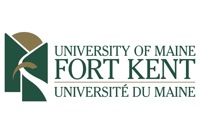Below is a summary of the abstract you submitted. Presenting author(s) is shown in bold.
If any changes need to be made, you can modify the abstract or change the authors.
You can also download a .docx version of this abstract.
If there are any problems, please email Dan at dar78@pitt.edu and he'll take care of them!
This abstract was last modified on May 5, 2017 at 2:49 p.m..

Biology Students at the University of Maine Fort Kent isolated and studied nine mycobacteriophages in 2016-2017 using Mycobacterium smegmatis as the host. Students used direct plating and enrichment cultures to isolate their phages from soils and river sediments in northern Maine and South Carolina. All of the phages belong to the Siphoviridae family based upon morphology determined by electron microscopy. Genome sequencing of three phages revealed that they belong to clusters A12, B1, and K1. Refuge, the A12 phage selected for further analysis, was isolated from submerged river sediment in Maine. Refuge’s genome is 53,594 base pairs long, and contains 91 protein-coding genes and one tRNA gene. Only two other phages belong to the A12 cluster, and BLASTn comparison shows that Refuge is most closely related to phage DarthPhader, a phage isolated from soil at Gonzaga University in Washington. Refuge’s ability to form plaques with M. smegmatis at different incubation temperatures was studied. Refuge formed larger plaques at 37 °C compared to 28 °C, and did not form plaques at 42 °C. Refuge and several other phages isolated at U. Maine Fort Kent were evaluated for host range using the spot test assay with four mycobacterial hosts: M. abscessus, M. brumae, M. fortuitum, and MCR15, a mycobacterial isolate similar to M. neoaurum that was isolated from the same South Carolina river sample as the K1 phage. None of the phages were able to lyse M. brumae or MCR15. Refuge showed clearing with M. abscessus and M. fortuitum, but a titer assay showed that Refuge did not form plaques with either of these hosts, and so the bacterial killing seen in the spot test was not true infection and lysis. Further work is underway to compare the genome of Refuge to the other two A12 phages, in order to gain insights into this small subcluster.


